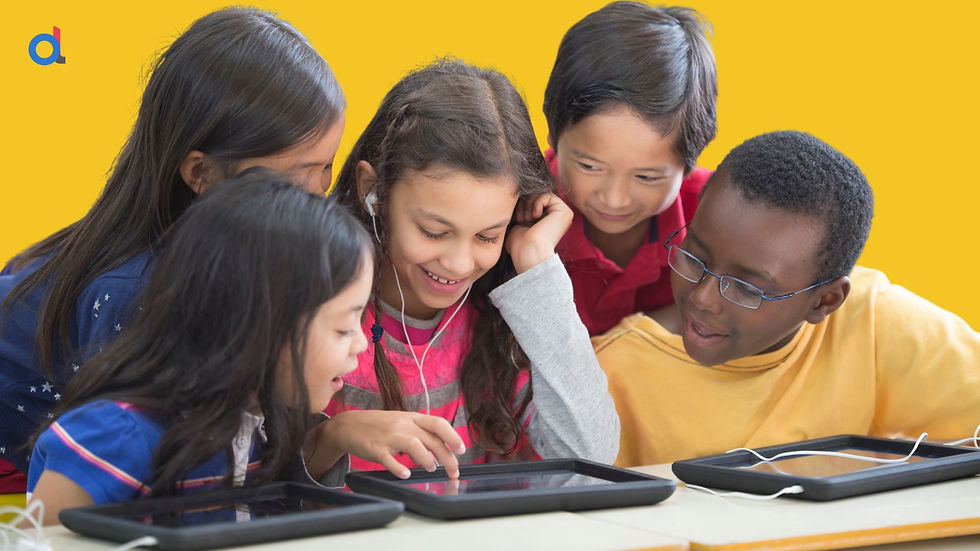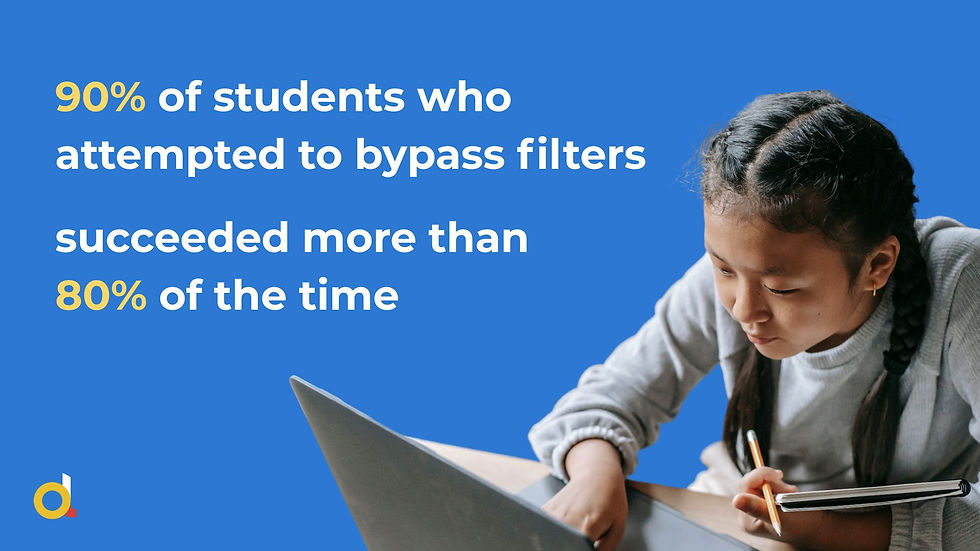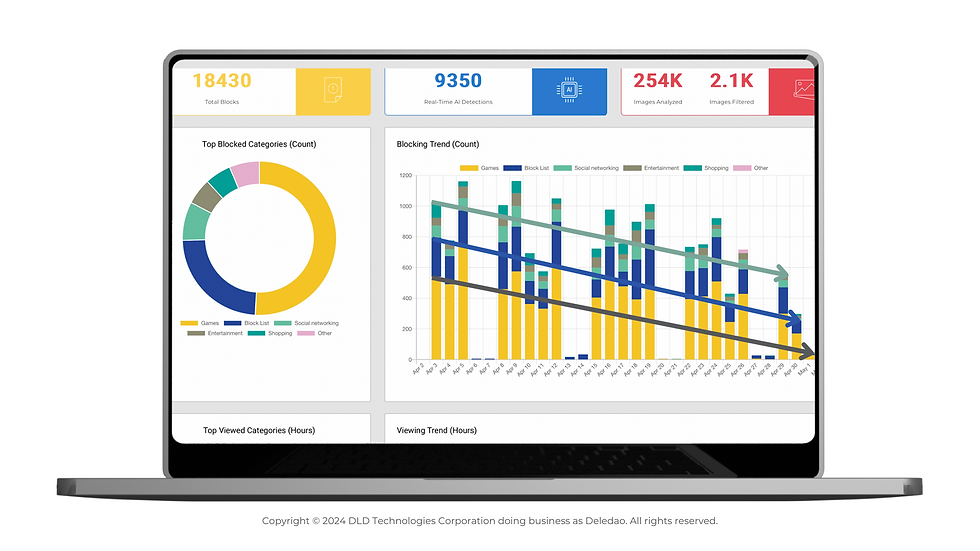Has the EdTech Revolution Been a Failure? Or Are We Missing a Crucial Step?
- Kevin Kuckkan, M.Ed.

- Dec 19, 2024
- 6 min read
Updated: Jun 5

The promise of the EdTech revolution has always been enticing: empower students with cutting-edge tools, create engaging learning environments, and prepare the next generation for a tech-driven world.
Yet, as we reflect on the last two decades, a pressing question emerges: has EdTech truly delivered on its promise, or have we simply handed students the keys to a Maserati without teaching them how to drive?
In this article, we'll talk analyze how implementing digital devices in classrooms has wreaked havoc on outdated classroom management software. In the end, we'll discuss what we can do to modernize our methods of distraction prevention.
The Rise of Digital Devices In Classrooms
As we’re all aware, the rapid adoption of 1:1 device initiatives in schools skyrocketed from 40% in 2017 to nearly 95% today as a result of the funneling of $189 billion into US schools via the American Rescue Plan, the March 2020 Cares Act, and the December 2020 COVID Relief Package. The resulting surge in EdTech resources for K12 brings to mind a famous scene from Jurassic Park, where Dr. Ian Malcolm, played by Jeff Goldblum, critiques the unchecked enthusiasm for genetic engineering: "Your scientists were so preoccupied with whether or not they could, that they didn’t stop to think if they should." Similarly, the rush to implement 1:1 programs often overlooked a critical question: were schools truly ready for this new classroom management plan—in terms of infrastructure and addressing student behavior?
Granted, it was an extremely trying period, and schools acted in the best interest of their students, making swift decisions during unprecedented times. However, even post-pandemic, classroom management challenges remain, and, in many cases, the misuse of school devices as agents of distraction isn’t just persisting but may even be on the rise.

A Digital Classroom Management Plan Without Guardrails
Handing over devices to students was meant to be a game-changer and in some ways, it was just that—revolutionary. As students’ computer skills grew, so did their ability to access vast amounts of educational content. Parallel to these changes, and driven mainly by the growth of social media, came an unanticipated explosion of distractions—social media content designed to captivate, entertain, and often derail focus.
The guardrails designed to reduce online distractions were built for a vastly different internet—one with far less content and complexity. In the late 1990s, classroom management software was created to block inappropriate websites and comply with regulations like the Children’s Internet Protection Act (CIPA). Back then, with just 23,500 websites in existence, this was a relatively simple task.
Fast forward to today, where the internet is a rapidly expanding ecosystem, with over 10,000 new websites launched every hour. Social media platforms like YouTube, which publishes over 3.7 million new videos daily, and TikTok, with over 34 million videos per day, along with numerous other dynamic content hubs and proxy workarounds, have made traditional filters reliant on static URLs and keyword blocklists obsolete. Frankly, the days of managing internet content with a list are over as explosive growth in the volume of online content now requires a modern, adaptive filtering approach capable of navigating the complexities of the internet in 2025 and beyond.
Did you know? - Even the US Surgeon General, Vivek Murthy, has called for action on social media, primarily urging Congress to require warning labels on social media platforms. Read the full story here.

The Reality for Teachers and IT Teams
The reality for many schools is that the task of enforcing digital focus isn’t on the adopted filter technology but rather has shifted to teachers via classroom management software. Instead of engaging directly with students...
Many educators are busy with:
Staring at screens
Monitoring student activity
Locking browsers
Closing tabs.
These time-consuming classroom control techniques (that should be handled by technology) have turned teachers into digital hall monitors—an exhausting and unproductive use of their time. In the words of New York Times contributor Jessica Groose, when reflecting on the challenges educators face daily in their classrooms: ‘Teachers are either teaching or acting like prison wardens: they can’t do both at the same time.’
A 2021 study, An Investigation into the Efficacy of URL Content Filtering Systems, confirmed what many educators already know: traditional filtering technology is woefully inadequate. The study revealed that 90% of students who attempted to bypass filters succeeded more than 80% of the time. Despite this, schools worldwide continue to invest in outdated filtering solutions that fail to deliver. The consequences are significant as teachers report constant distractions from managing off-task behavior, while IT teams are overwhelmed by students exploiting proxy servers and other workarounds.
The tools intended to enhance learning, instead create classroom chaos by allowing students nearly unfettered access to distractions, which now correlate to drops in student achievement.

Modernizing Content Filtering with Real-Time-AI
The challenges faced by the EdTech revolution don’t stem from a lack of promise but from the persistence of outdated systems unable to address the complexities of today’s digital classrooms. Regression back to pencil and paper or abandoning educational technology altogether isn’t the solution; instead, its tools and frameworks must evolve alongside the ever-changing internet they aim to regulate.
How AI-powered web filtering is Changing the Game
Real-Time filtering
AI-driven content filtering represents a critical step forward. Unlike static, list-based systems, AI-powered classroom management software operate in real time, analyzing content for contextual meaning and distinguishing between productive educational material and potential distractions. Rather than relying on rigid URL lists, these advanced systems dynamically adapt to the fluid nature of the modern web.
Giving time back to teachers
Educators and IT professionals alike understand that monitoring digital behavior shouldn’t completely fall to teachers, nor should it consume the precious instructional time that it currently does for many. An effective classroom management plan has content filtering operating seamlessly in the background, automating the task of maintaining focus and safety. AI-powered filters meet this need, allowing teachers to dedicate their energy to instruction, enabling students to engage fully in learning, and liberating IT teams from the Sisyphean task of patching vulnerabilities, blocking URLs, and combating proxy evasion.
Intelligent filtering solutions that utilize real-time AI, like Deledao's ActiveInstruct, shift the burden and help schools restore the equilibrium initially envisioned when technology entered the classroom. The time has come to fully empower educators, equipping them with the tools they need to focus on teaching rather than digital distractions.

Reducing IT admin workload
It’s also crucial to support IT departments in streamlining their workflows, alleviating the burdens of constantly managing proxy sites, and maintaining outdated filtering systems. Implementing smarter, more adaptive solutions will safeguard students from inappropriate content while creating an environment that fosters safe, focused, and effective digital learning.
Only by addressing these challenges can we truly advance the promise of digital education, ensuring that technology enhances—not hinders—the learning experience for both students and educators.
The Classroom Management Plan to Avoid an Ed Tech Failure
The EdTech revolution hasn’t failed—it remains an ongoing journey. To fully realize its potential, we must reconsider how technology is implemented in schools, confronting the limitations of traditional systems and embracing innovations that align with the realities of today’s digital landscape.
Education is too important to be derailed by avoidable distractions. It’s essential that students have the right tools and safeguards in place not only to operate technology effectively but also to navigate its complexities with focus and confidence.

As someone who has been part of Deledao nearly since its inception, I’m naturally biased, yet I also recognize the transformative impact of our artificial intelligence filtering technology, Instant AI. It’s a game-changer for teachers, IT teams, and students. The classroom management plan of today must include automating time-consuming tasks helps teachers reclaim valuable instructional time while empowering IT teams to manage the ever-expanding internet without outdated blocklists.
The journey toward transformative change has only just begun. As innovation progresses, new features are being developed to refine classroom management, enhance personalized learning experiences, and promote digital self-regulation among students. Advancements are being crafted to elevate the overall efficacy of digital learning environments, ensuring that technology serves as a catalyst for both academic achievement and the well-being of students.
It's clear that the future trajectory of educational technology rests on implementing intelligent, adaptive solutions that continually evolve in response to the dynamic needs of educators and learners. Deledao stands at the forefront of this evolution, pioneering the path toward a more efficient, engaging, and impactful educational experience.
Is Your School Ready for
the Next Wave of Digital Learning?
Find Out with Our FREE 2025 Whitepaper
K-12 Digital Learning Challenges and Practical Solutions
Including:
In-depth analysis of key challenges facing 2025's digital learning environments
Designed for IT Directors, teachers, and school administrators
Actionable solutions to address challenges effectively
Follow Us!
Always stay up-to-date with the latest by subscribing to Deledao's Newsletter, a monthly newsletter where we talk about trending news and feature updates! In the meantime, check out our LinkedIn page for tips, trends, and highlights on K12 education.


